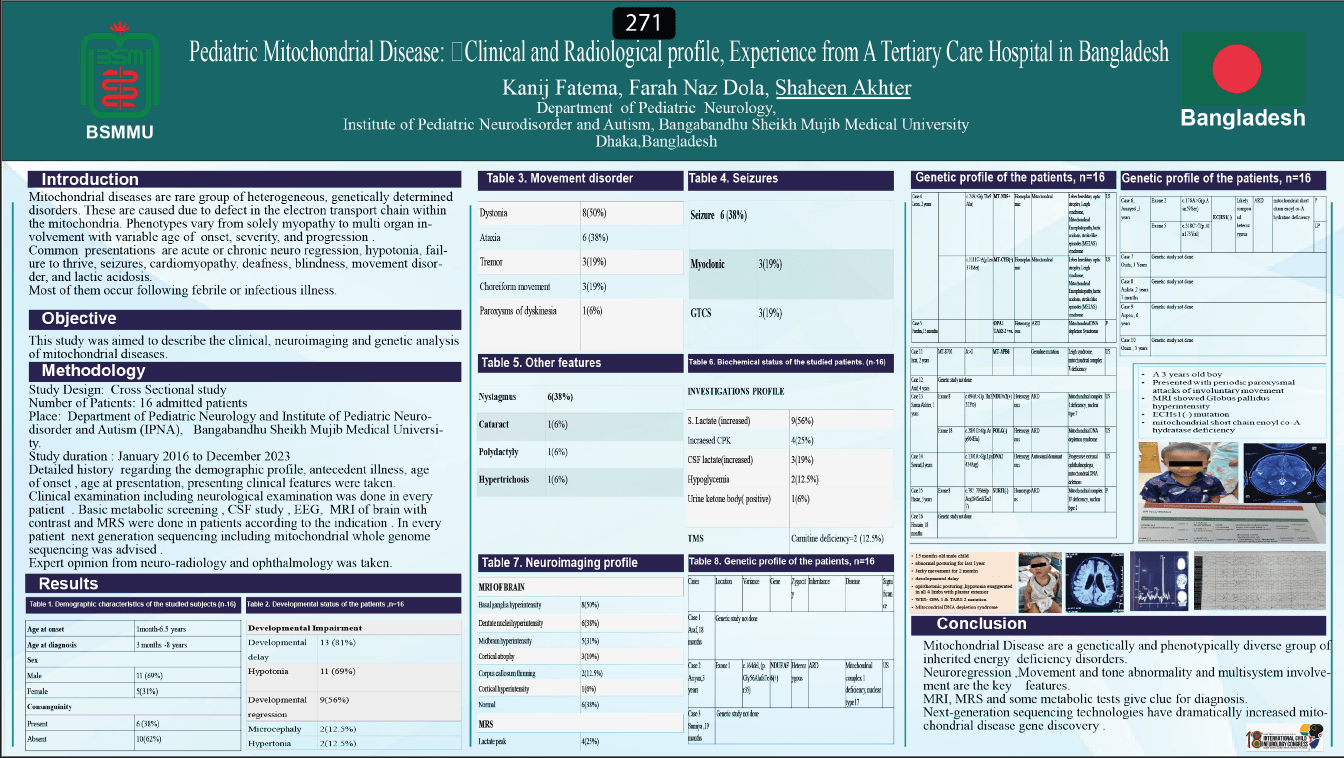Pediatric Mitochondrial Disease: Clinical And Radiological Profile, Experience From A Tertiary Care Hospital
Background: Mitochondrial diseases are rare group of heterogeneous, genetically determined disorders that affects multiple organs with variable severity due to dysfunction of mitochondria. They usually present with acute or chronic with intermittent decompensation of neuro regression, hypotonia, failure to thrive, seizures, cardiomyopathy, deafness, blindness, movement disorder, and lactic acidosis. This study was done to describe the clinical, neuroimaging and genetic analysis of mitochondrial diseases among twelve admitted patients at Department of Pediatric Neurology, BSMMU, Dhaka from January 2016 to July 2023. Results: The age of the patients was 3 months-6 years, 8 were male, age of disease onset ranged from 1-24 months. Developmental delay and regression, seizure, hypotonia, dystonia were observed among most of them. Two had persistent hypoglycemia. One presented with periodic paroxysms of dyskinesia and weakness. Most of the cases were precipitated by fever. Bilateral basal ganglia involvement on MRI was found in most of the cases. Genetic analysis showed most were leigh syndrome, two had primary carnitine deficiency, one had mitochondrial short chain enoyl co-A hydratase deficiency and one had mitochondrial DNA depletion syndrome. Conclusion: Multisystem heterogenous involvement gives a clue to the suspicion of mitochondrial disease in pediatric population.
Kanij Fatema
Bangabandhu Sheikh Mujib Medical University
Bangladesh
Farah Naz Dola
Bangabandhu Sheikh Mujib Medical University
Bangladesh
